How a simulation of early actions proved vital in the face of unseasonal floods in Nepal
Early actions taken ahead of floods in Nepal in 2021 helped to save lives and minimize the impacts.
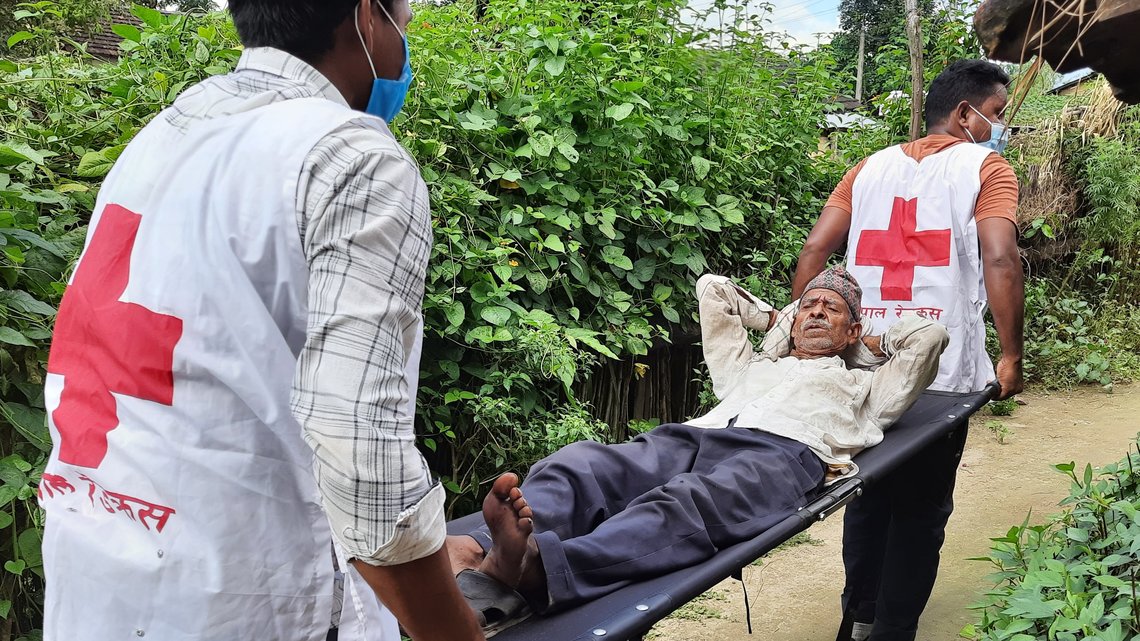
On 29-30 September 2021, the Nepal Red Cross Society organized a simulation exercise to test early actions for floods. Barely a month later, Nepal was hit by massive floods along the Karnali river basin after three days of continuous rainfall. Early actions taken ahead of these floods – including some that were tested in the simulation – helped to save lives and minimize the impacts.
Establishing early actions for floods
With financial support from EU Civil Protection and Humanitarian Aid, the Nepal Red Cross Society and municipal authorities jointly developed a forecast-based action mechanism to act ahead of floods. This consisted of scientific forecasts, impact thresholds, triggers and risk indicators, as well as pre-defined early actions. The Danish Red Cross, the Red Cross Red Crescent Climate Centre and Humanity & Inclusion provided technical support.
This mechanism was developed to ensure that authorities and communities are informed of potential floods in a timely manner, and prepared to implement early actions once a trigger is reached. It was also a way to test the use of the government’s social security allowance programme to deliver early actions.
The early actions selected relate to: livelihoods; water, sanitation and health (WASH); housing and temporary shelter; critical services; and making the social protection system more shock responsive. These actions were agreed by the line agencies for two river basins – Karnali and Babai – and covered five municipalities.
Testing the early actions
The simulation in September tested the forecast-based action mechanism and its early actions. Among other aims, it tested understanding among government officials and the Nepal Red Cross Society regarding their roles and responsibilities, and the timeline and implementation process for early actions.
The simulation was well received by local authorities and the Nepal Red Cross Society’s local chapters. For example, it helped to shift their perception from acting solely in response to a disaster to the benefits of acting in anticipation. Lessons learned from this exercise are now being used to improve the mechanism. But the simulation had a much more immediate impact, when massive floods occurred along the Karnali river just weeks later.
Taking early actions against unseasonal flooding
The timing of this unseasonal rainfall could not have been worse, as it was the harvesting season in this agrarian region. But lessons from the simulation allowed local authorities to work with the Nepal Red Cross Society's local chapters to minimize the impacts.
Before the flood hit, the Nepal Red Cross Society provided continuous weather updates to municipalities, noting the rising river levels and threats to nearby communities. This filled an information gap created by a technical glitch in the government’s weather forecast mechanism. Early warnings were sent to communities in multiple ways, such as FM radio stations, traditional village informers, sirens, and door-to-door visits by Nepal Red Cross Society volunteers.
Municipality officials and the Nepal Red Cross Society were also closely monitoring the Karnali river embankments in Janaki and Tikapur. Even before water levels crossed the official trigger threshold, there was a risk of these embankments being breached. Considering that rainfall and water levels were continuing to rise, the trigger was activated ahead of the flood.
The municipal offices immediately issued evacuation orders. High-risk families living along the Karnali river were evacuated to pre-identified safe sites and temporary shelters, and given food for three days. Just few hours later, floods inundated those communities – so acting early helped to save lives and reduce losses.
We were constantly providing weather updates to all the departments within the municipal office, as well as all the ward offices. Based on this information, one of the ward offices immediately mobilized tractors for early evacuation. They didn’t have to wait for a decision from the municipal office.
Cash assistance through social protection systems
The simulation exercise in September also tested the idea of using the government’s social security allowance programme to deliver early actions. Having been tested, this approach was implemented as a response to the October flood.
Emergency funds from the Danish Red Cross were used to provide rapid multi-purpose cash assistance to vulnerable families registered with the programme, and who were assessed as being affected by the flood (i.e., whose houses were partially or fully damaged). Families meeting these criteria received 13,500 Nepalese Rupees (US$113), the amount agreed by Nepal’s cash coordination group to support a family of five to meet their basic needs for one month.
The social security allowance programme was used in several ways after the flood.
- Post-disaster assessments were used to identify recipients who had been affected. This list was then cross-checked with the programme’s registry.
- People meeting the criteria were notified that they would receive cash assistance through the municipality’s text message (SMS) system, which uses recipients’ contact details from the social security allowance registry.
- Cash was then transferred directly into the bank accounts of selected individuals.
- Complaints and questions about this process were managed through the existing grievance mechanism, following the standard process.
This demonstrates that social protection systems can be used to provide cash assistance at scale in a cost-effective and timely way. While cash was provided post-disaster on this occasion, the process could also be implemented ahead of a disaster. As such, it opens a path for the Nepalese government and humanitarian actors to use pre-existing government mechanisms to meet humanitarian needs.
The government’s social security allowance programme reaches an estimated 3.4 million vulnerable individuals in five main categories: (1) senior citizens; (2) persons with disabilities; (3) children under five; (4) single and widowed women; and (5) endangered ethnic groups. Its ‘delivery chain’ consists of four elements: (1) a registration and renewal system; (2) an information management system, including a registry of recipients’ personal details, contact numbers, banking details and location; (3) a distribution process – all recipients receive their allowance into a bank account in their name; and (4) a local grievance system to help people with feedback or problems.
Moving forwards
Lessons from the simulation, and from acting in anticipation of, and in response to, the October flood, are being used to revise Nepal’s forecast-based action mechanism. For example, a review of the simulation with community-based networks and organizations in the project areas identified gaps in the process, especially in relation to protection, gender and inclusion. These and other recommendations have been integrated into an early action matrix, developed jointly with relevant stakeholders.
The Nepal Red Cross Society and local authorities will continue to test and strengthen the forecast-based action mechanism in preparation for the coming monsoon season. Simultaneously, the project team will work to ensure that Nepal’s social security allowance programme is more responsive to shocks and can continue to provide a service when disasters occur (e.g., through flexibility to rapidly expand and adapt to reach vulnerable people). Plans for further social protection initiatives are also underway, such as providing cash top-ups as an early action, as well as ways to reach at-risk populations who are not part of social protection programmes (e.g., pre-paid debit cards or mobile banking).
Video from the simulation exercise
This short video shares stories from some of the communities threatened by floods in the Karnali river basin.
Play Video
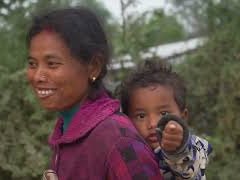
Impressions from the project
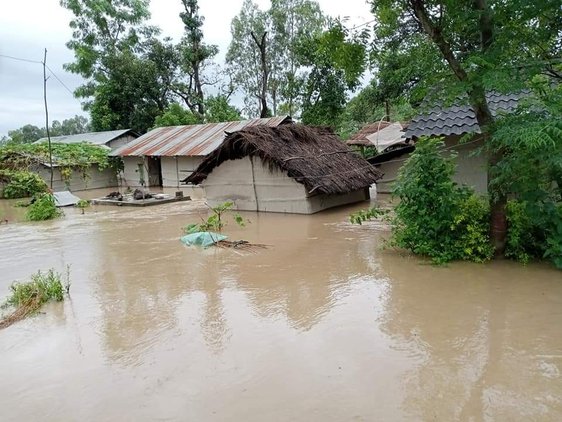
Flooded communities in the region. @ Nepal Red Cross Society
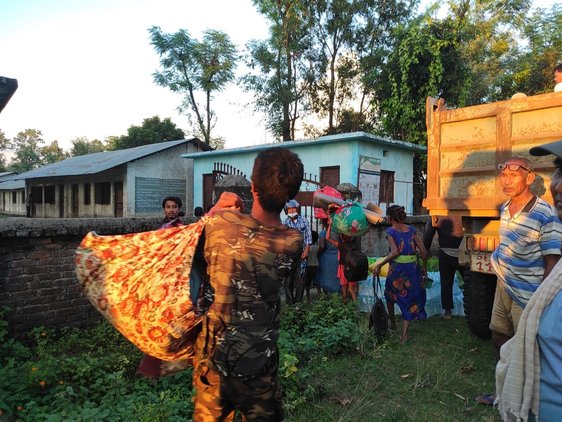
Early evacuation of families at-high risk. © Nepal Red Cross Society
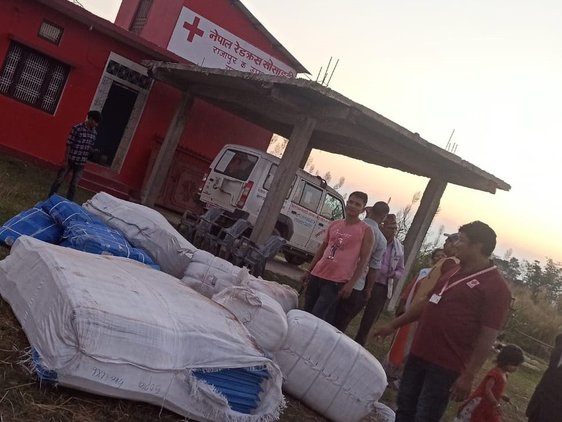
Preparing tarpaulins stocks for use as temporary shelters. © Nepal Red Cross Society
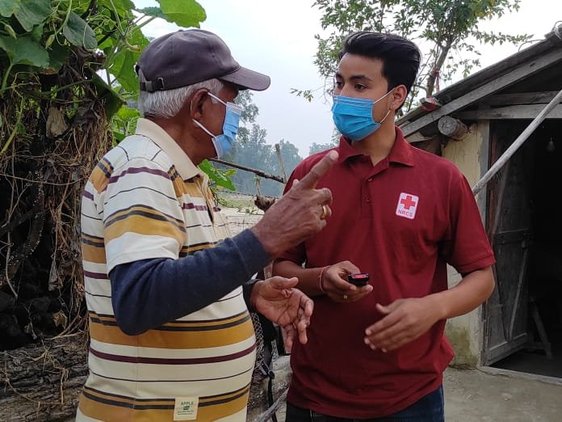
A Nepal Red Cross Society volunteer explains cash assistance to Gagan Singh, a recipient. © Nepal Red Cross Society
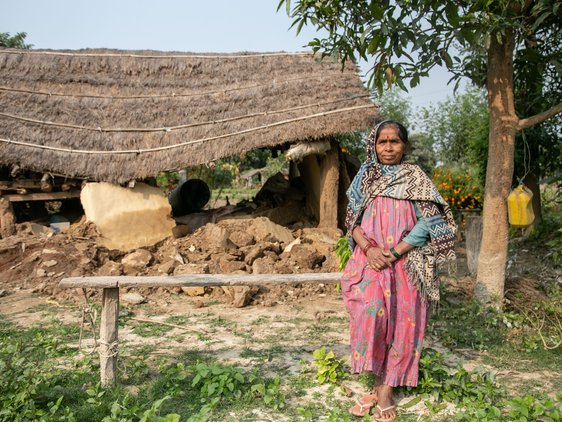
Ranju Devi Sunar, a recipient of cash assistance, used the money to buy food and a mobile set. © Danish Red Cross
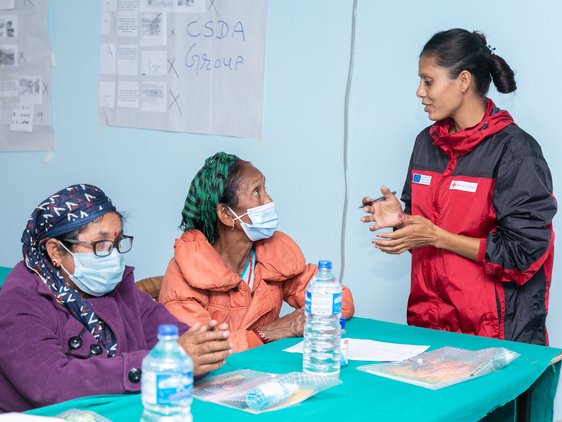
A consultation meeting with community-based networks and organizations representing persons with disabilities, to get their inputs for the early actions matrix. © Danish Red Cross

Flooded communities in the region. @ Nepal Red Cross Society
Early evacuation of families at-high risk. © Nepal Red Cross Society
Preparing tarpaulins stocks for use as temporary shelters. © Nepal Red Cross Society
A Nepal Red Cross Society volunteer explains cash assistance to Gagan Singh, a recipient. © Nepal Red Cross Society
Ranju Devi Sunar, a recipient of cash assistance, used the money to buy food and a mobile set. © Danish Red Cross
A consultation meeting with community-based networks and organizations representing persons with disabilities, to get their inputs for the early actions matrix. © Danish Red Cross
Further resources
This blog was written by Alina Karki, senior documentation officer, Danish Red Cross, with inputs from Mark James Johnson, shock-responsive social protection advisor, Danish Red Cross, and Manish Dhungel, programme coordinator, Danish Red Cross. You can read more about the project here.
